[This recipe is one of our NINE Favourite Recipes of 2020. Check out the post here].
[May 2021: We’ve cooked this dish again for Raya 2021 with turmeric leaves. Check out the new post here].
Since we couldn’t visit friends for Raya this year, we decided to cook our own rendang!
According to our friend (whose sis-in-law is from Perak), rendang tok is not rendang tok without daun kunyit (turmeric leaves). As we were unable to find daun kunyit – we decided to call this rendang (tak) tok!
We based our recipe on Betty Yew’s Rasa Malaysia cookbook (published in 1982) and Che Nom ‘s excellent video tutorial (click here), with some adjustments of our own!
Our rendang turns out to be a hit with our family! The beef were super tender and flavourful – having absorbed all the spices. It was of course tastier the day after!
Rendang is best enjoyed with some lemang (mmmm….) and some hours set aside after meal for some nap time.
So what is rendang tok? Rendang is a type of dry beef curry that is slow-cooked and braised in coconut milk (santan) and spices to yield the most flavourful and tastiest meat. Originating from Minangkabau region in Sumatra, rendang is a common dish in Malaysia and Indonesia.
As it is time-consuming to prepare, rendang is usually served as the main dish during the Hari Raya festivities. As the liquid dries up during the cooking process, the meat becomes tender and absorbs all the lovely spices.
There are many versions of rendang. Ours is a take on the famous Rendang Tok from Perak. Every Malay family has their own rendang recipe.
KEY TIPS:
* Beef that is pejal lembut (firm and yet soft) can be used for rendang. We used chuck tender, rump and topside for our rendang – which turned out great. They’re cheaper than your choice sirloin and tenderloin cuts.
* Rendang is not hard to cook – it is just time-consuming to properly slow-cook the beef (it took about 2.5 hours for us). Hence, major appreciation to all the makciks who cooked this while fasting for Raya!
* Don’t be stingy with the cooking oil. The oil will eventually separate (pecah minyak) from the gravy at the end – which can be removed.
* Authentic rendang tok is dry, but bursting with flavours. Ensure you cook until the oil separates from the delicious gravy. We added two cili padi for some heat – which suited our taste buds (and Ming’s mild tolerance for heat). Adjust to your preference.
* Rendang can kept for five days in the fridge. The rendang gets more flavourful as it sits longer in the fridge.
For detailed step-by-step process and videos, check out our Instagram post here.
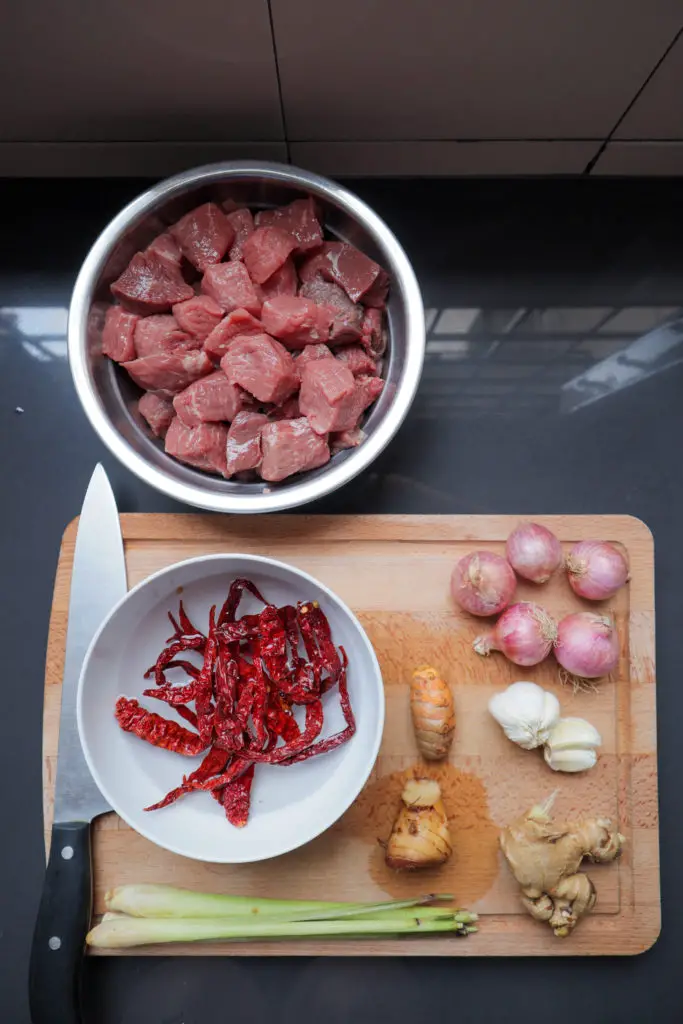
Wet blend ingredients and beef
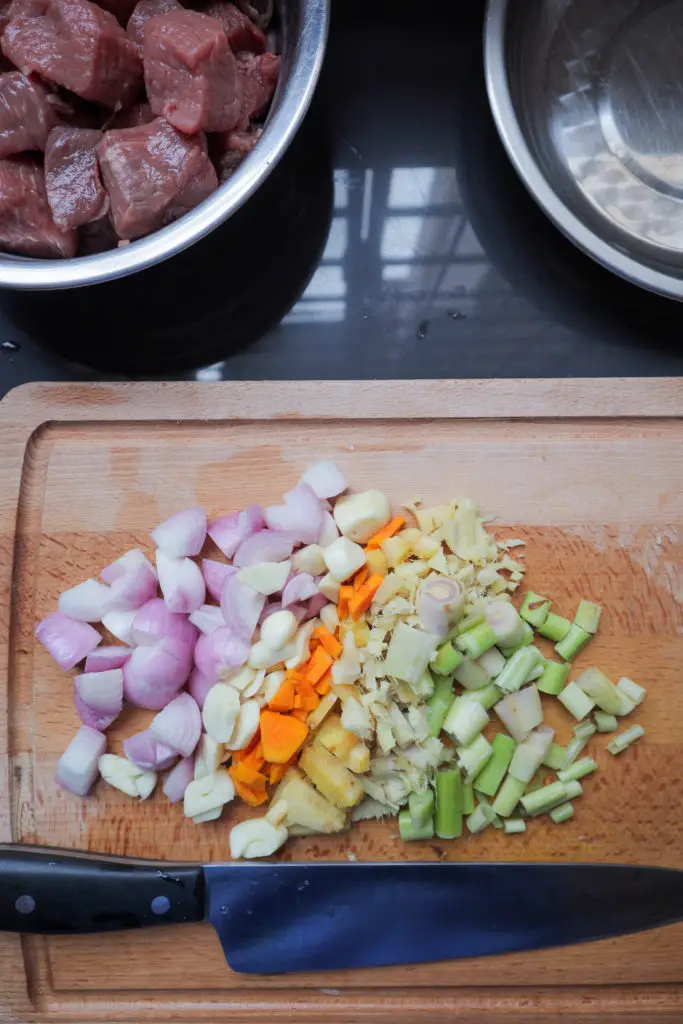
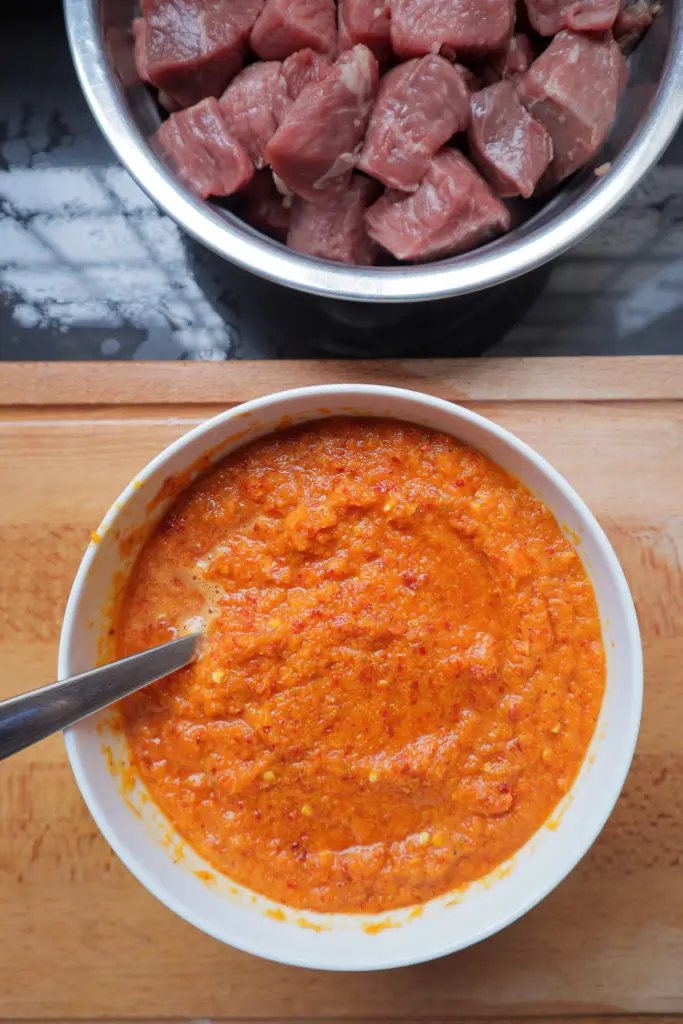
Wet ingredients blended 
Dry spices 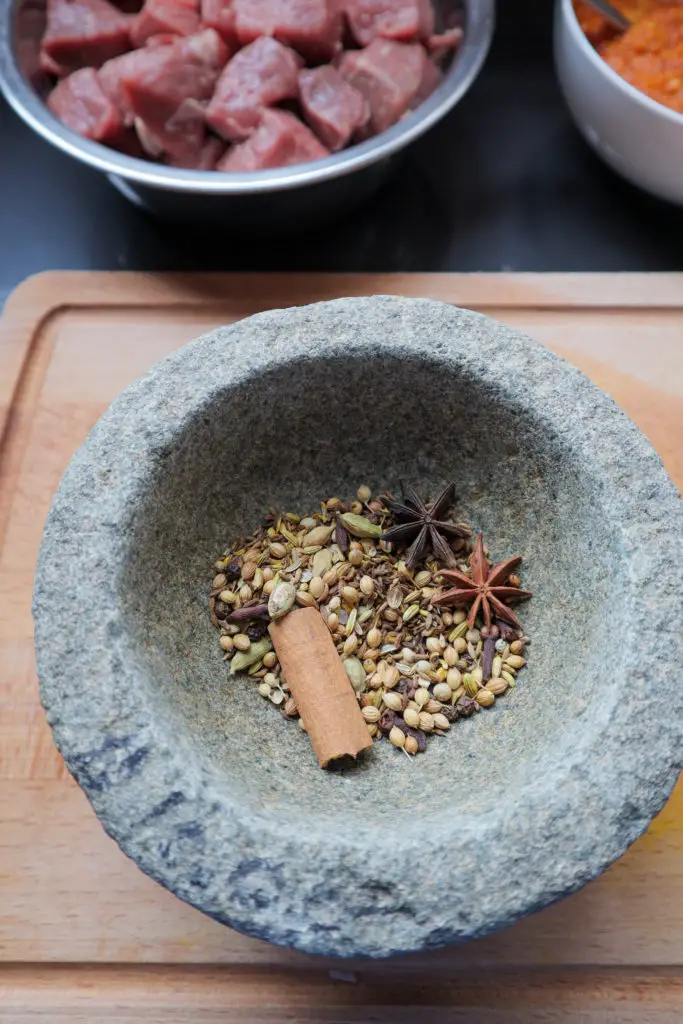
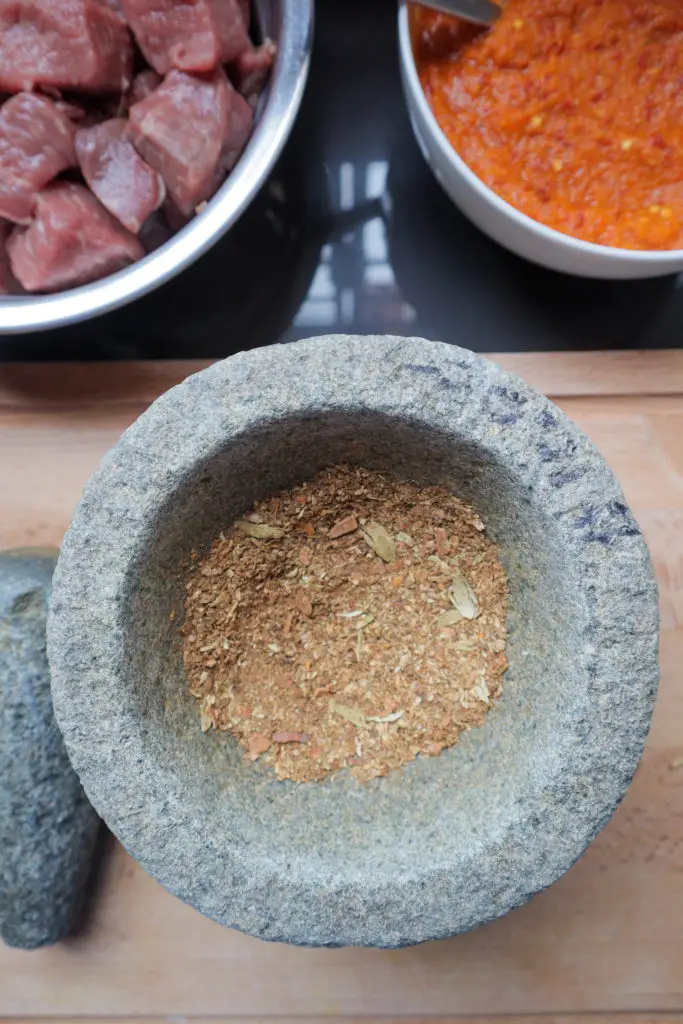
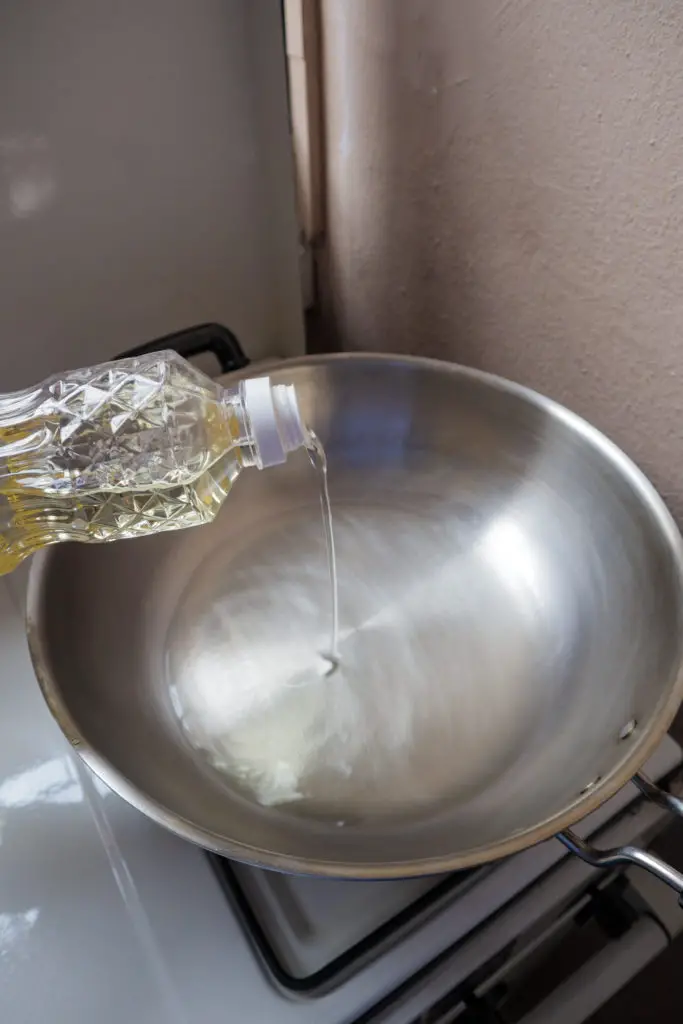
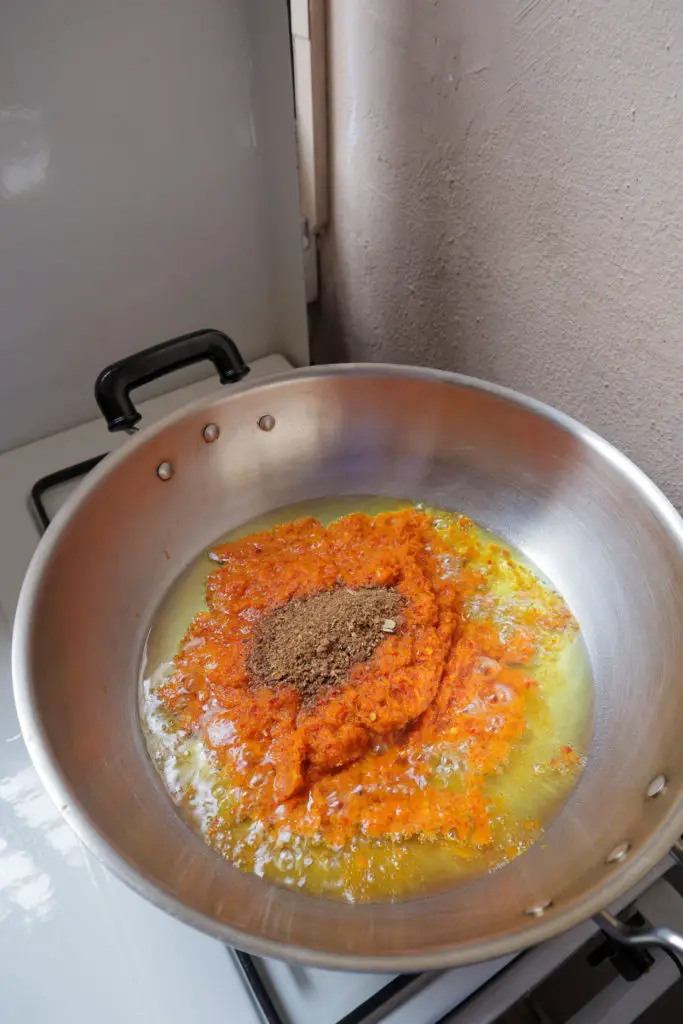
Combine wet and dry ingredients 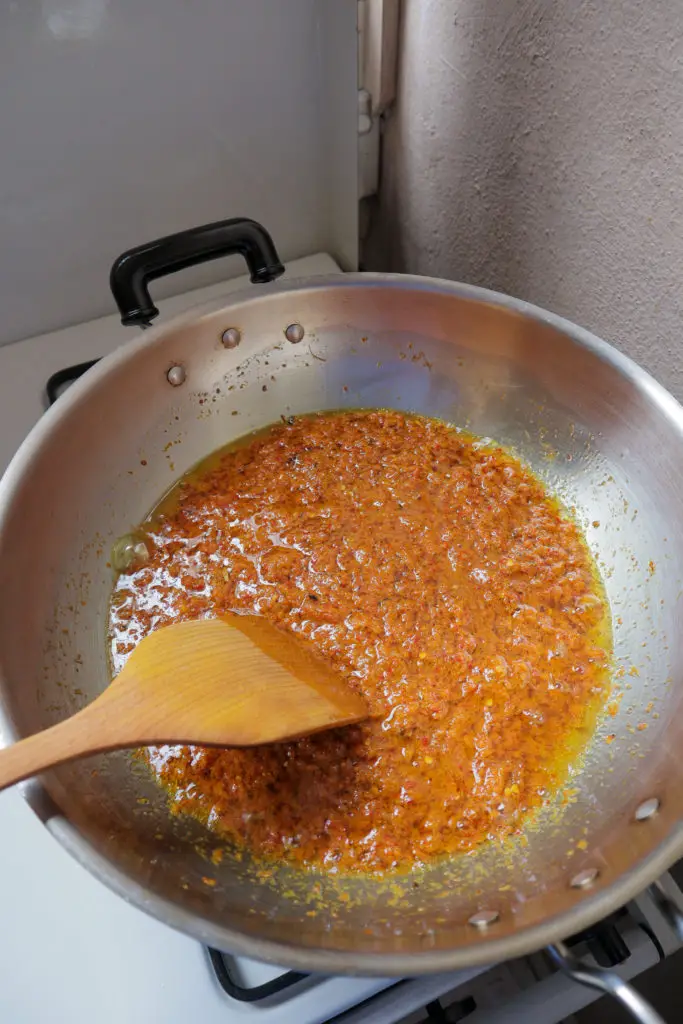
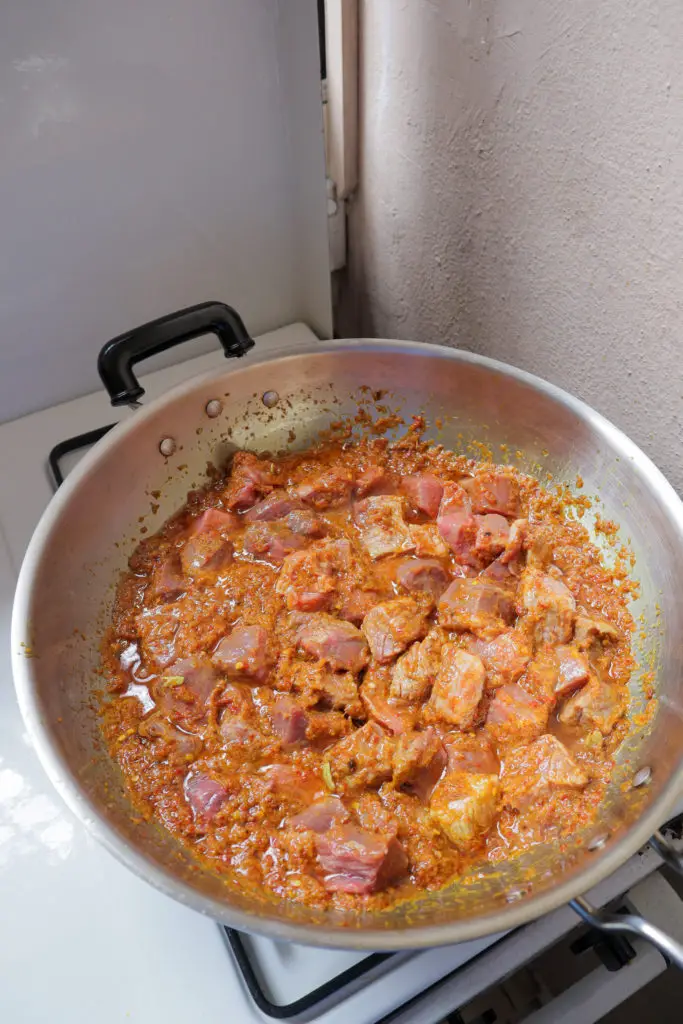
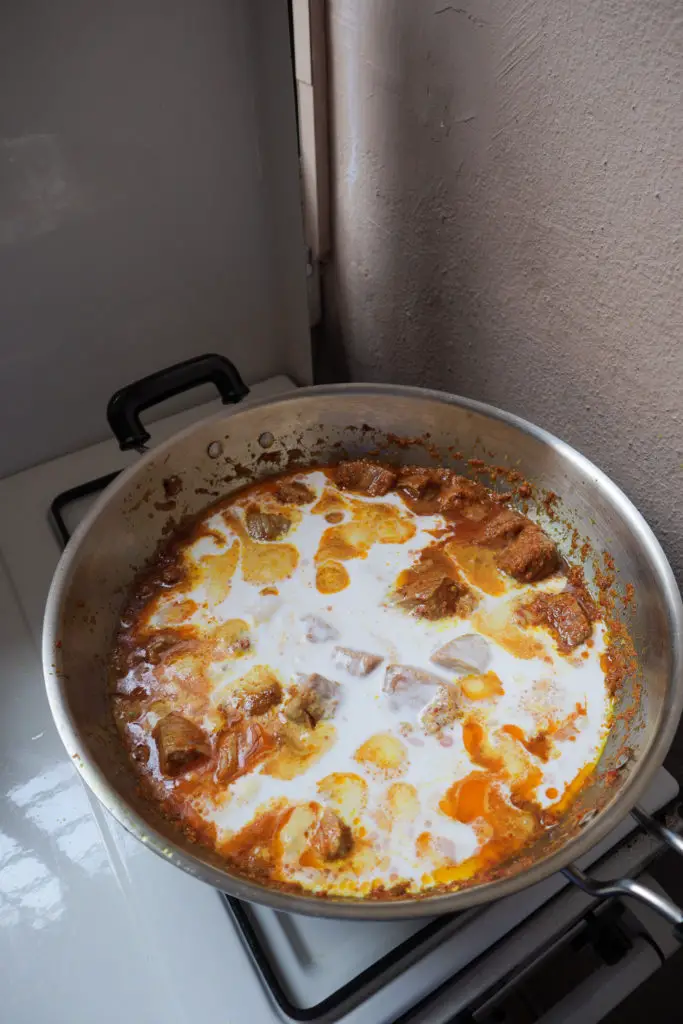
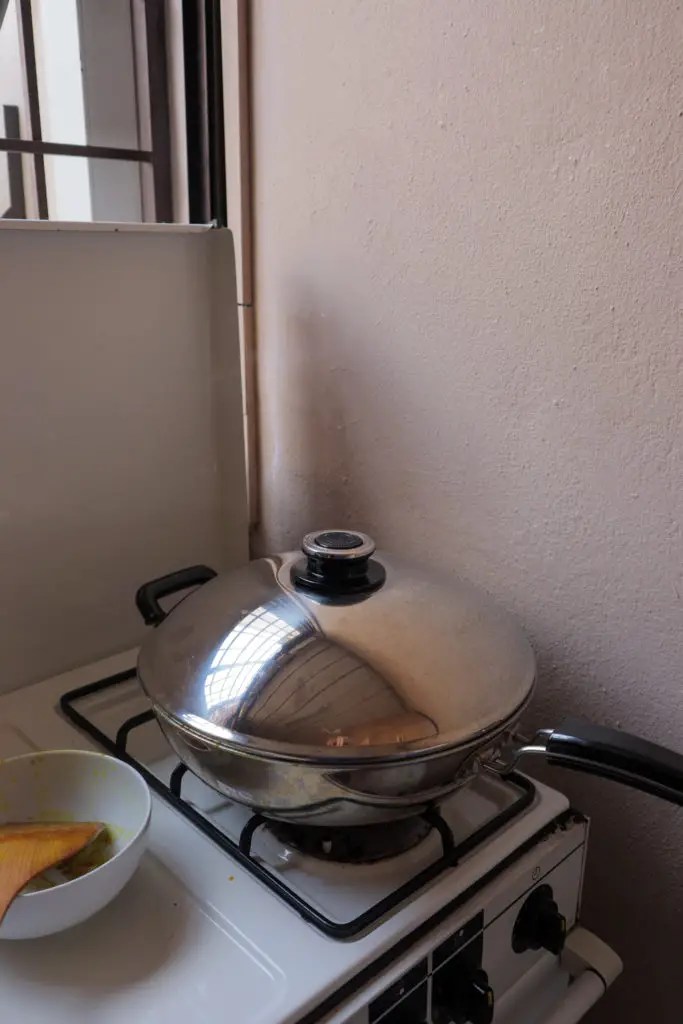
Slow cook for 2-2.5 hours 
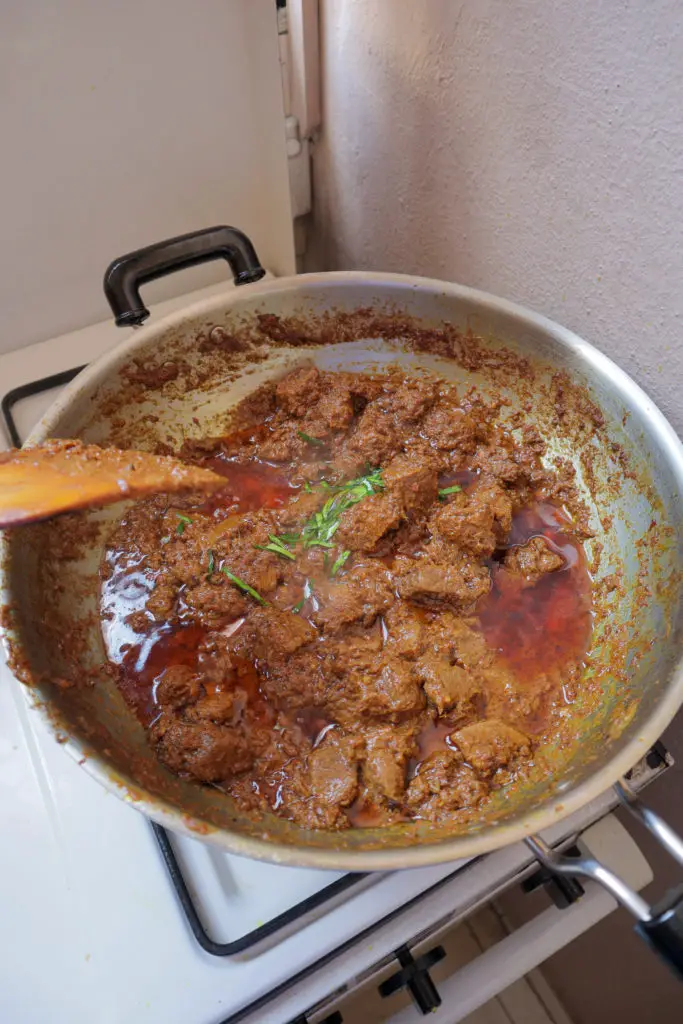
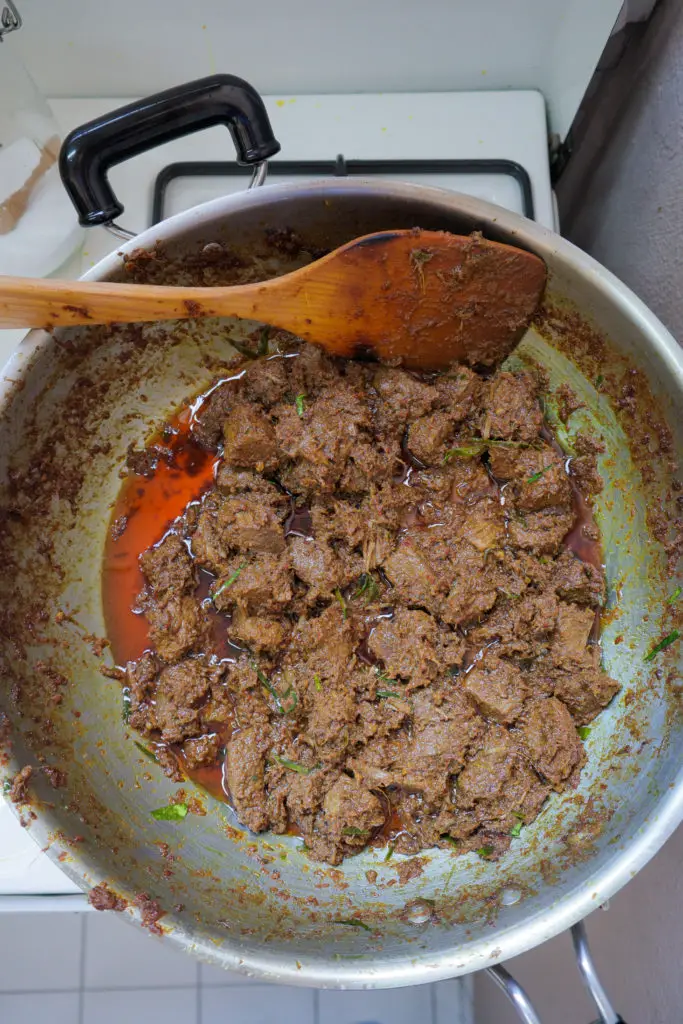
Rendang (Tak) Tok [recipe]
Course: Lunch, Dinner, Special occasionCuisine: Malay, IndonesianDifficulty: Intermediate8
servings40
minutes4
hoursOur version of the traditional Malay dish – rendang tok – served during Hari Raya.
Ingredients
1 kg beef, cut into 2-inch cubes
- Wet blend ingredients
6 Indian small onions or shallots (about 80g), roughly cut
6 garlic cloves, roughly cut
3-inch ginger, roughly cut
2-inch turmeric root, roughly cut
2-inch galangal, roughly cut
16 dried chillis, soaked in water and seeds removed
3 lemongrass stalks, sliced
2 green cili padi (optional)
150ml water
- Dry blend ingredients
1tsp cumin seeds
1tsp fennel seeds
7 cardamoms
1tbsp coriander seeds
8 cloves
2 star anises
1tsp black peppercorns
1 cinnamon stick
- Other ingredients
1.5 cup cooking oil
400ml santan (coconut milk)
80g kerisik (toasted coconut paste)
1 small asam keping (tamarind slice)
60g gula Melaka, or adjust to taste
salt to taste (about 2 tsp for us)
1-2 daun kunyit (turmeric leaves), stems removed and julienned
2-3 daun limau purut (kaffir lime leaves), stem removed and julienned
Directions
- Combine wet blend ingredients
- Use a food processor and blend all the wet blend ingredients. Add water (about 150ml) if necessary. Set aside.
- Prepare dry blend mix
- Heat up a pan over medium heat. Fry all the dry spices without any oil until fragrant.
- Transfer all the dry spices to a pestle and mortar. Roughly grind the spices to make a rough powder. Set aside.
- Let’s slow cook
- Heat up cooking oil in wok. Use enough oil to ensure there is a layer of oil over both wet and dry blend ingredients.
- Add the wet and dry blend ingredients. Mix well.
- When it is mixed well and colour has slightly darkened, add the beef cubes and santan. Mix well.
- Cover with lid and let it simmer over low heat for about 1.5-2.5 hours. Stir occasionally. The slow-cooking process is done when beef is tender, and sauce had reduced significantly with a layer of oil on top. (This is called pecah minyak – or when oil is released and separated naturally from the ingredients).
- The final stage
- Add the small piece of asam keping. This is to add a tinge of sourness to the rendang. Use sparingly.
- Add kerisik and mix well. Kerisik gives rendang its distinct texture and fragrance.
- Add julienned turmeric leaves and kaffir lime leaves. Mix well.
- Finally, add gula Melaka and salt to taste. Mix well and cook until gula Melaka dissolves.
- It is done! Garnish with any remaining turmeric leaves & kaffir lime leaves for colour. Serve!
Notes
- Beef that is pejal lembut (firm and yet soft) can be used for rendang. We used chuck tender, rump and topside for our rendang – which turned out great. They’re cheaper than your choice sirloin and tenderloin cuts.
- Rendang is not hard to cook – it is just time-consuming to properly slow-cook the beef (it took about 2.5 hours for us). Hence, major appreciation to all the makciks who cooked this while fasting for Raya!
- Don’t be stingy with the cooking oil. The oil will eventually separate (pecah minyak) from the gravy at the end – which can be removed.
- Authentic rendang tok is dry, but bursting with flavours. Ensure you cook until the oil separates from the delicious gravy. We added two cili padi for some heat – which suited our taste buds (and Ming’s mild tolerance for heat). Adjust to your preference.
- Rendang can kept for five days in the fridge. The rendang gets more flavourful as it sits longer in the fridge.

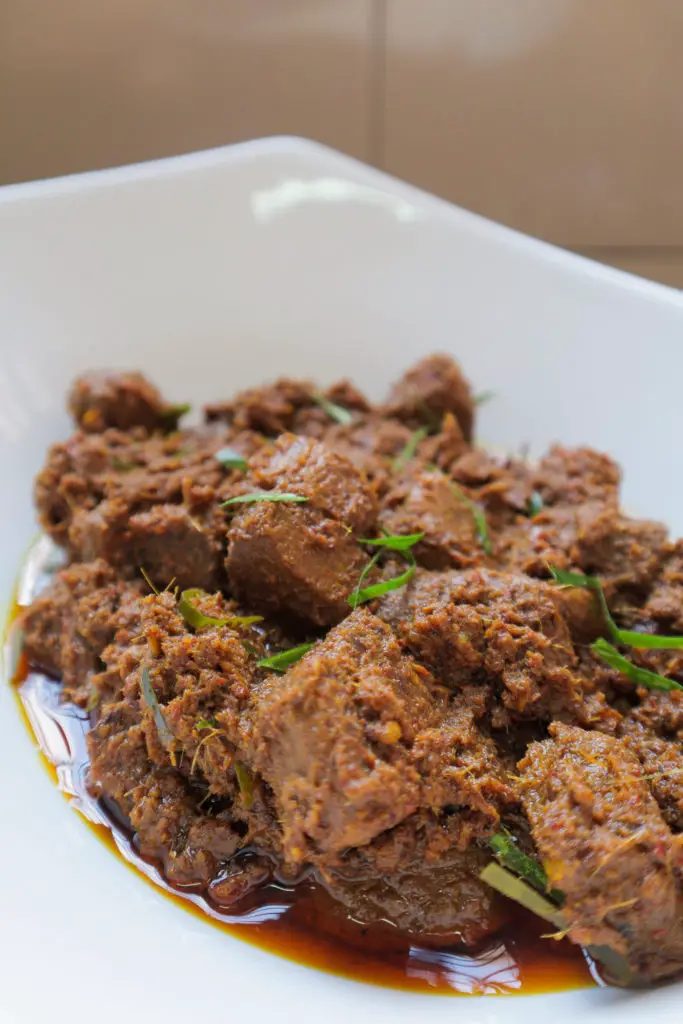
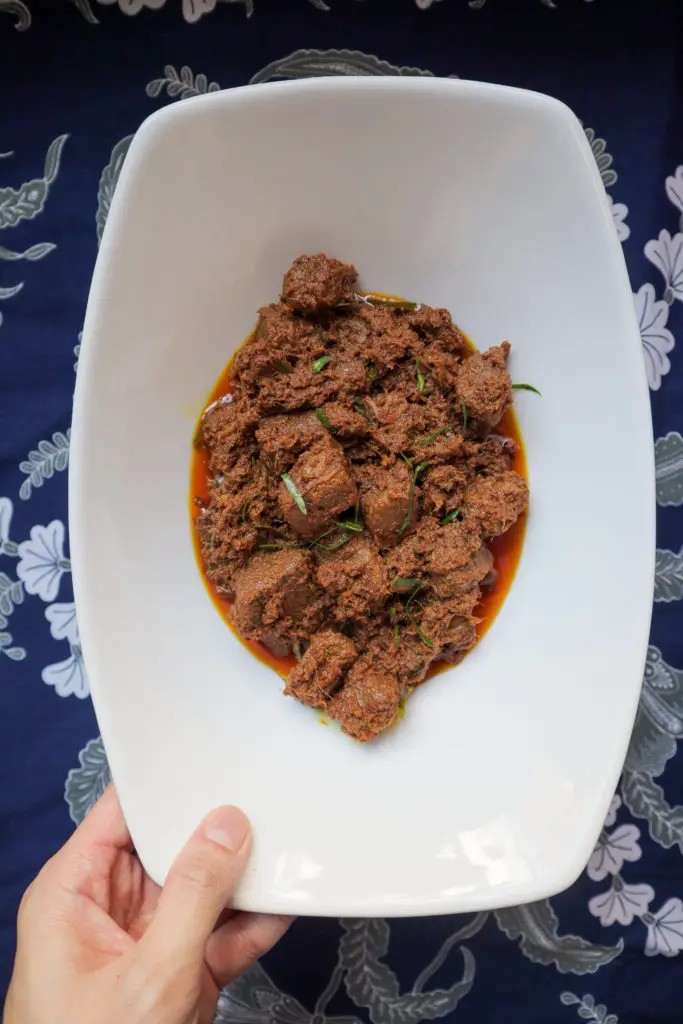
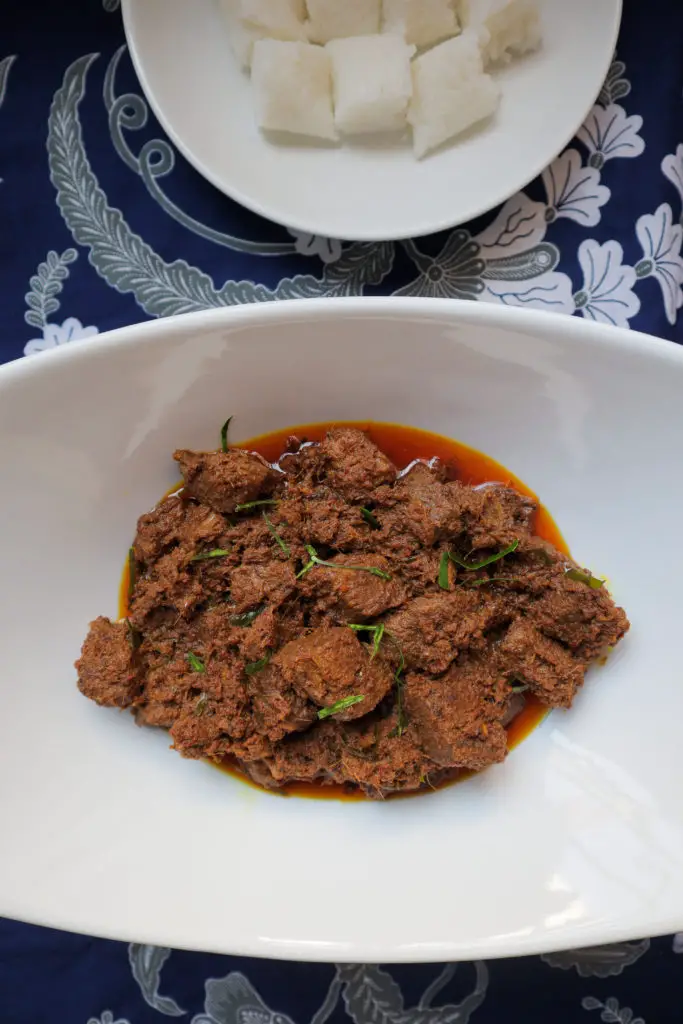
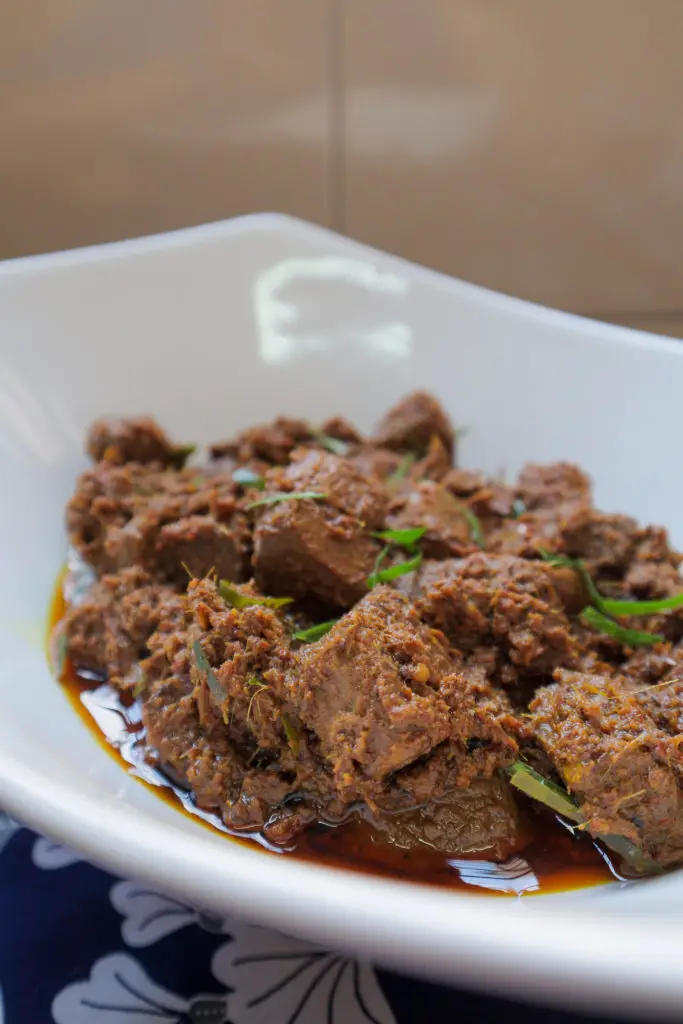
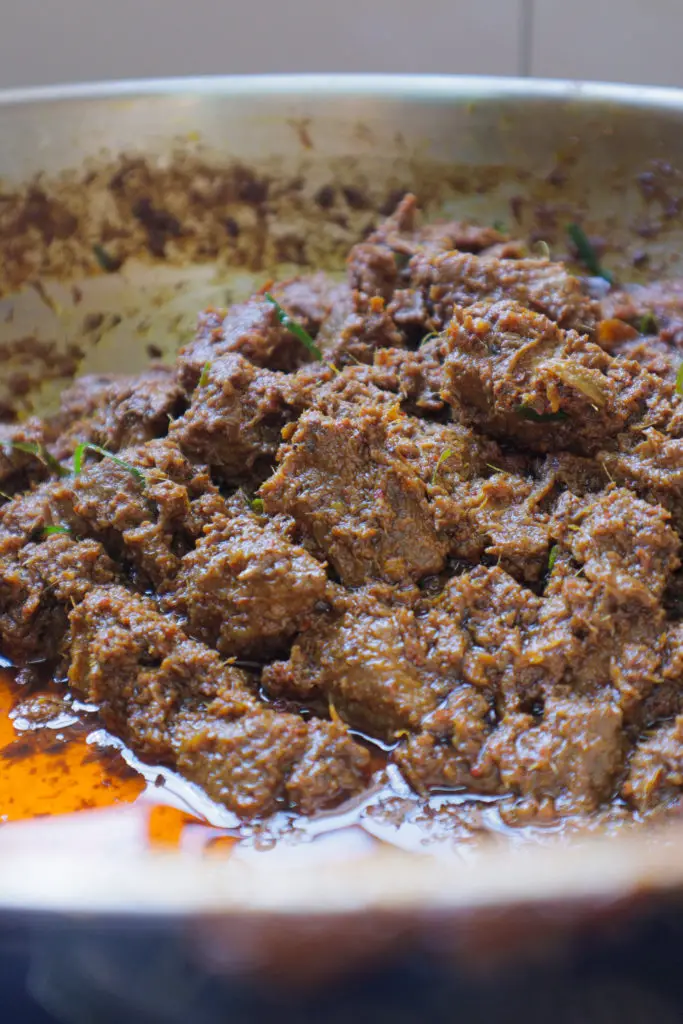
![Rendang (Tak) Tok [recipe]](https://thokohmakan.com/wp-content/uploads/2020/07/20200524173534_IMG_7746-scaled-683x1024.jpg)